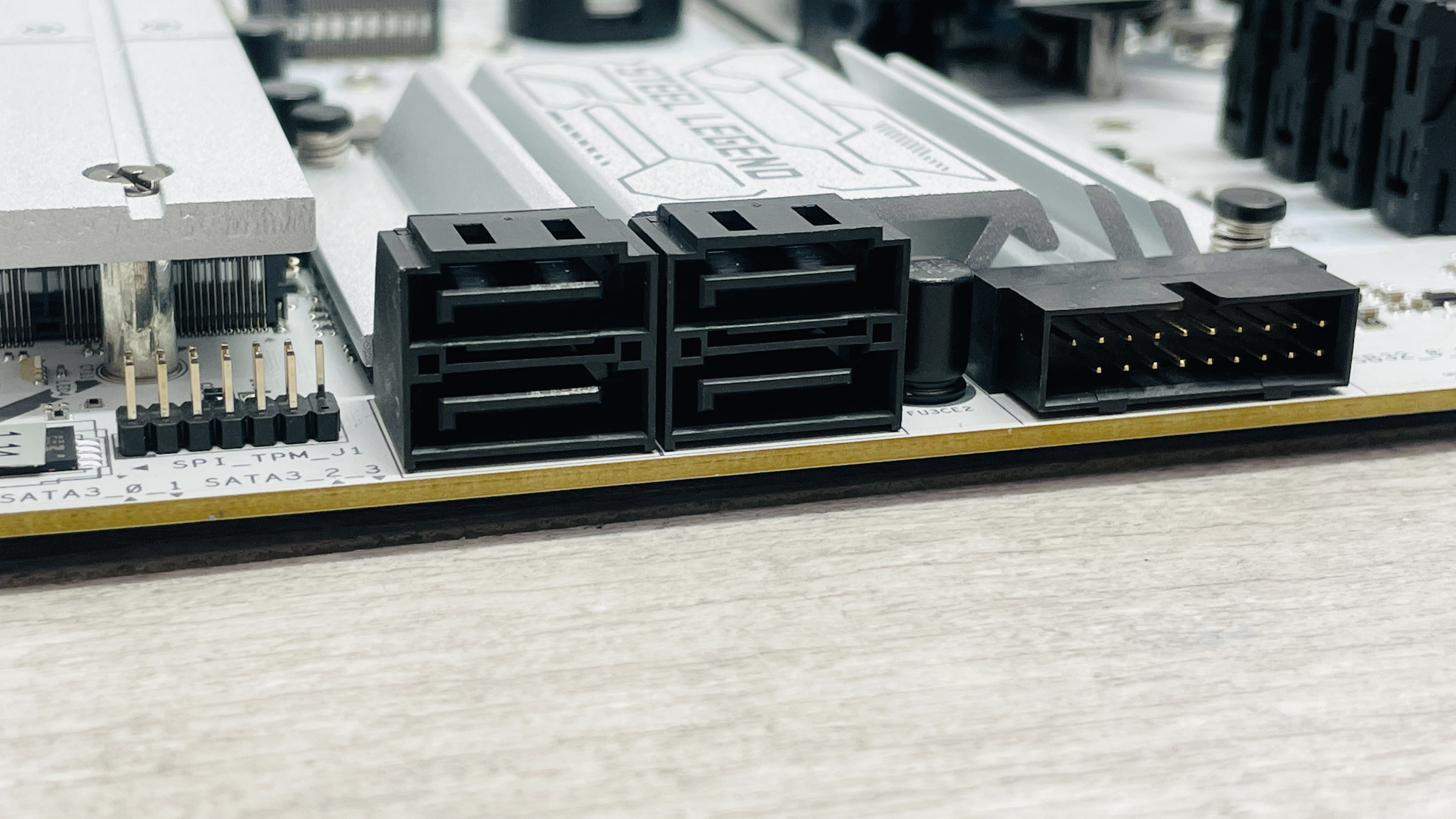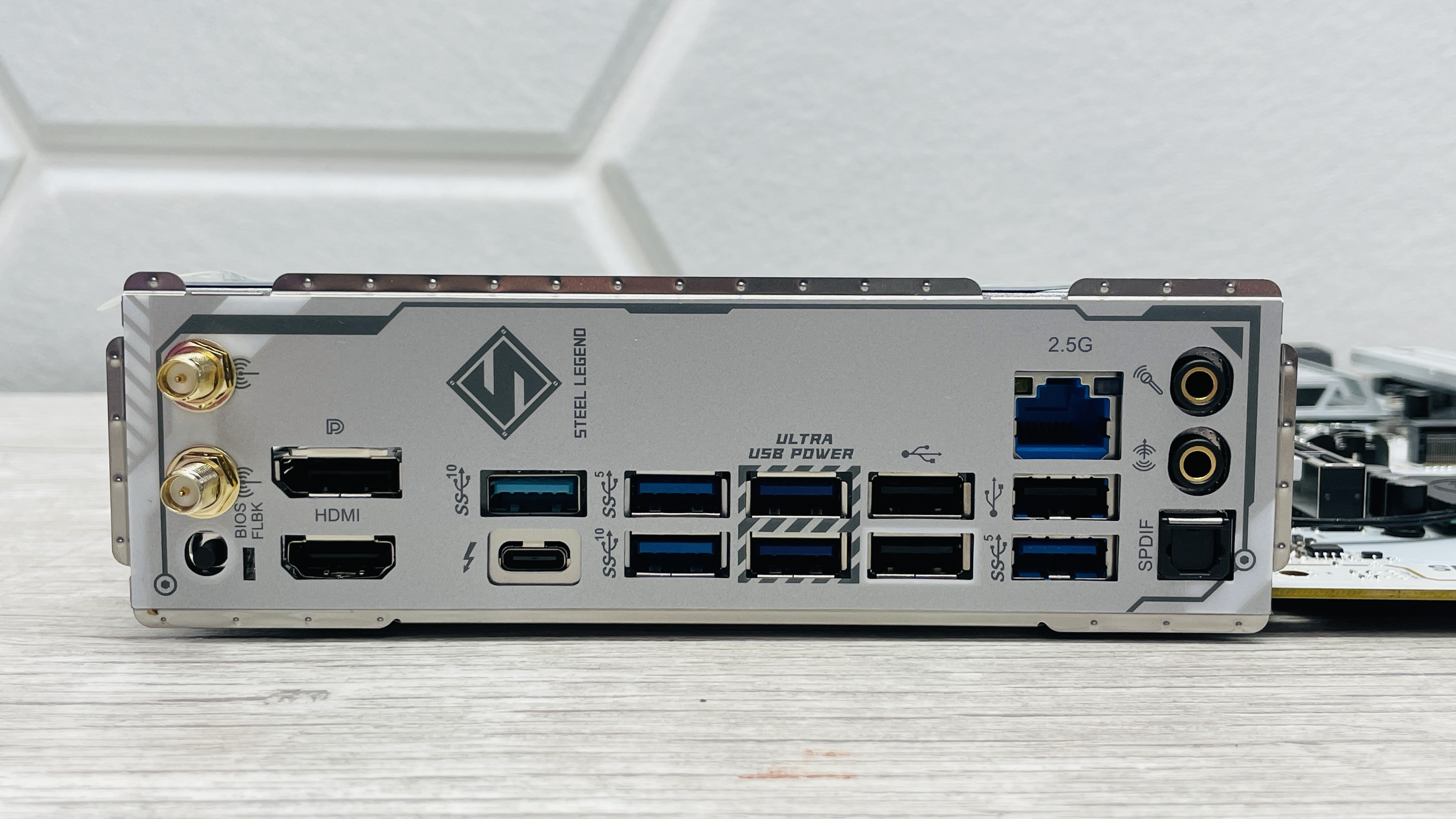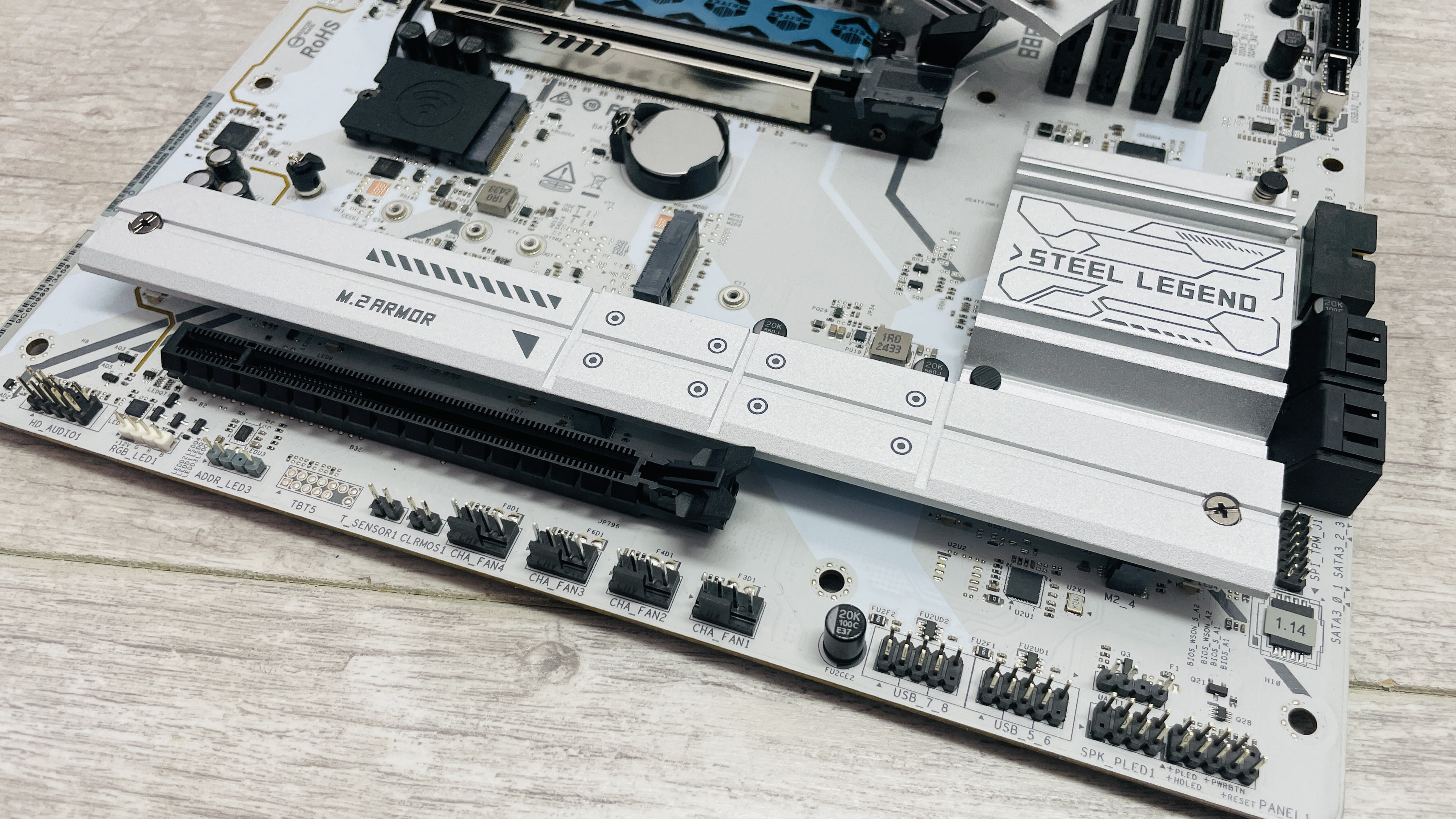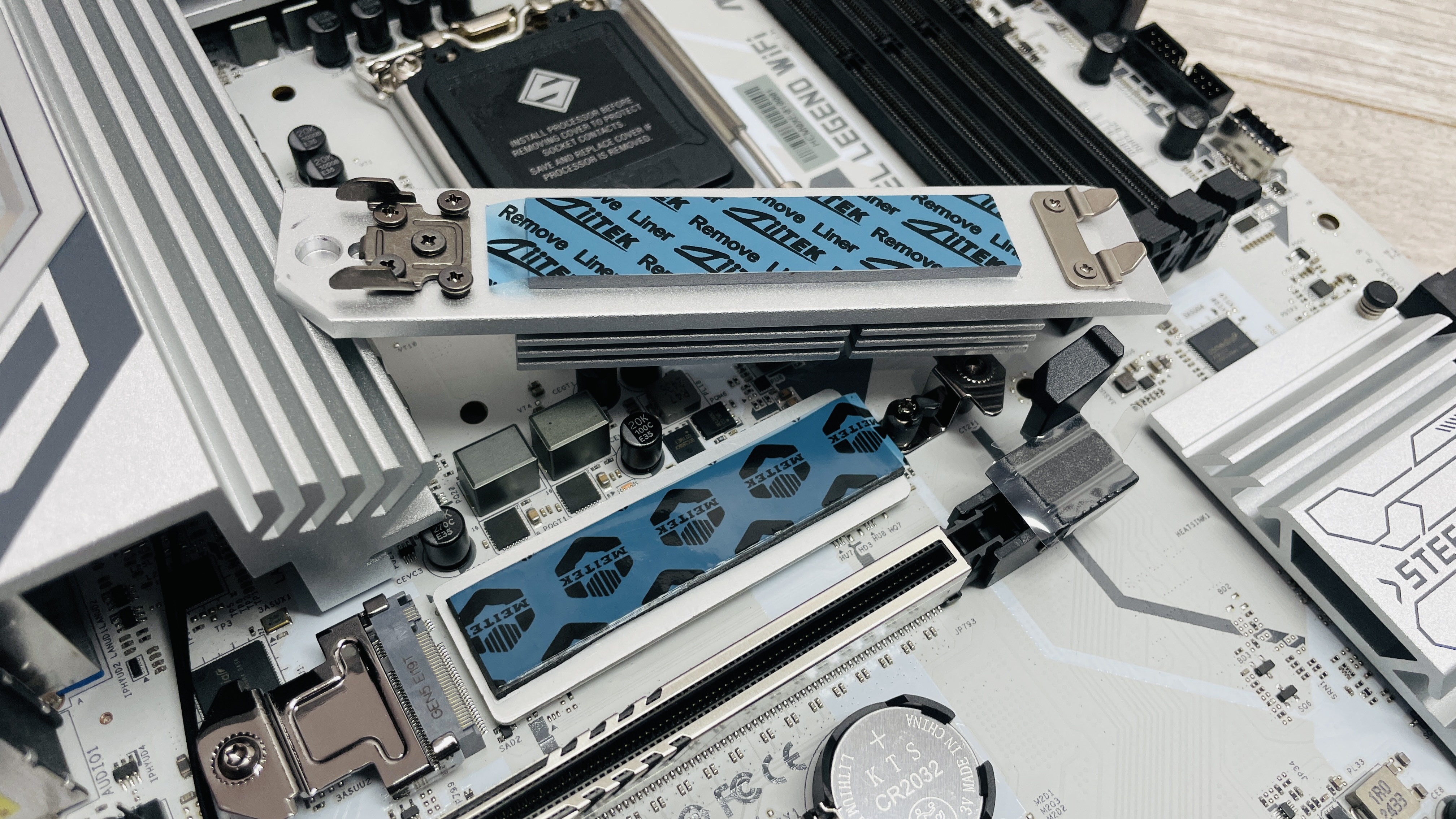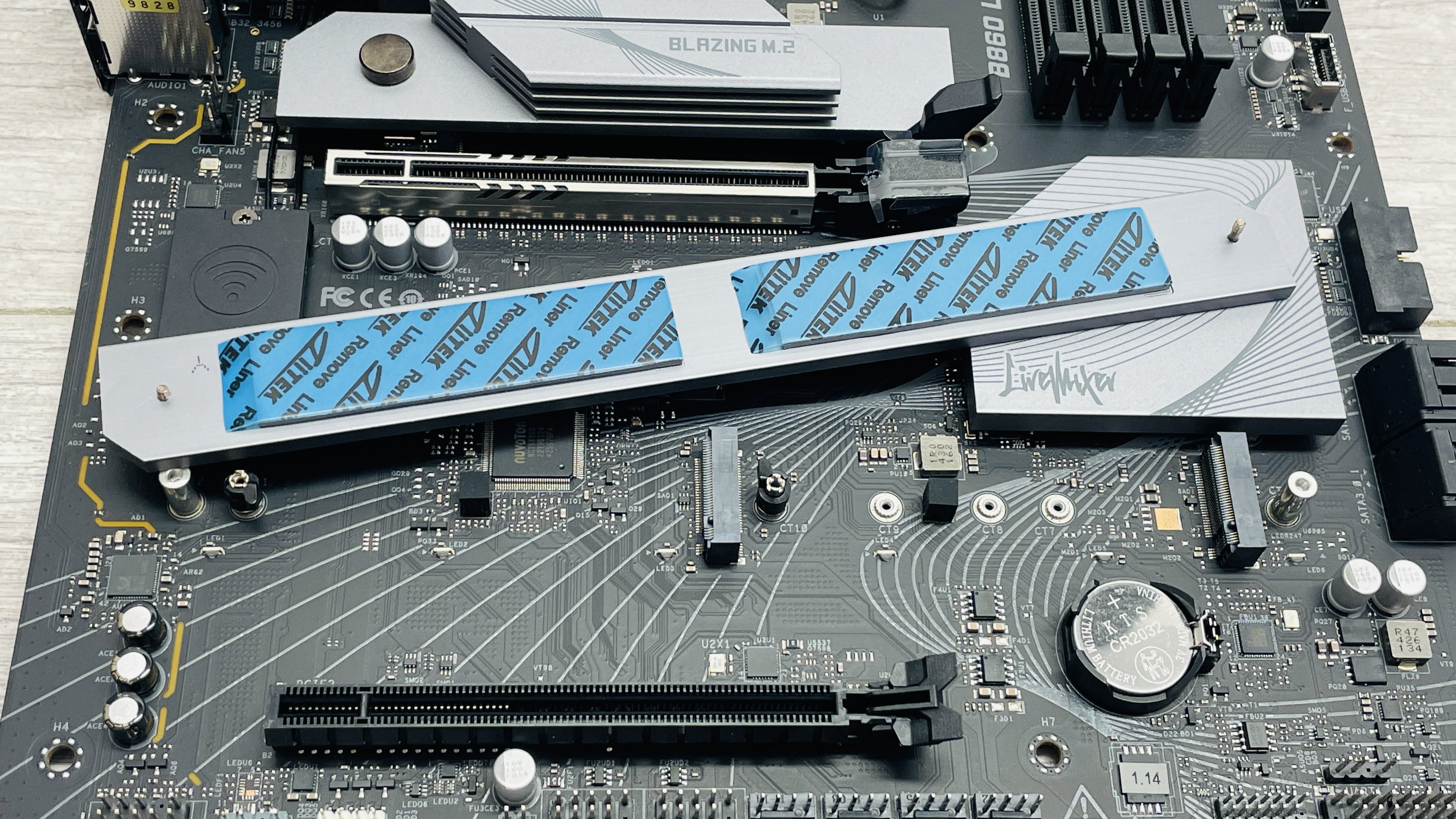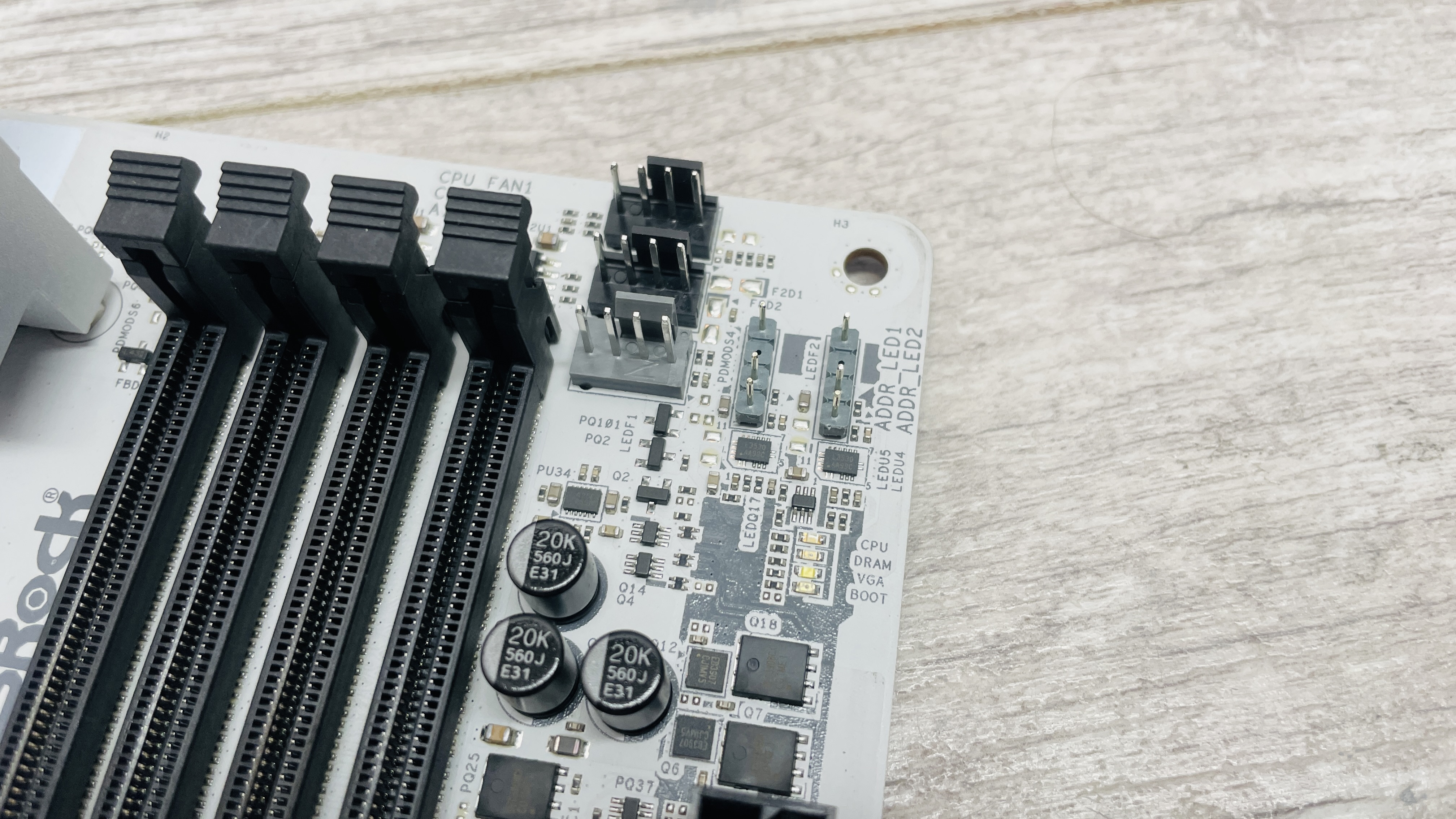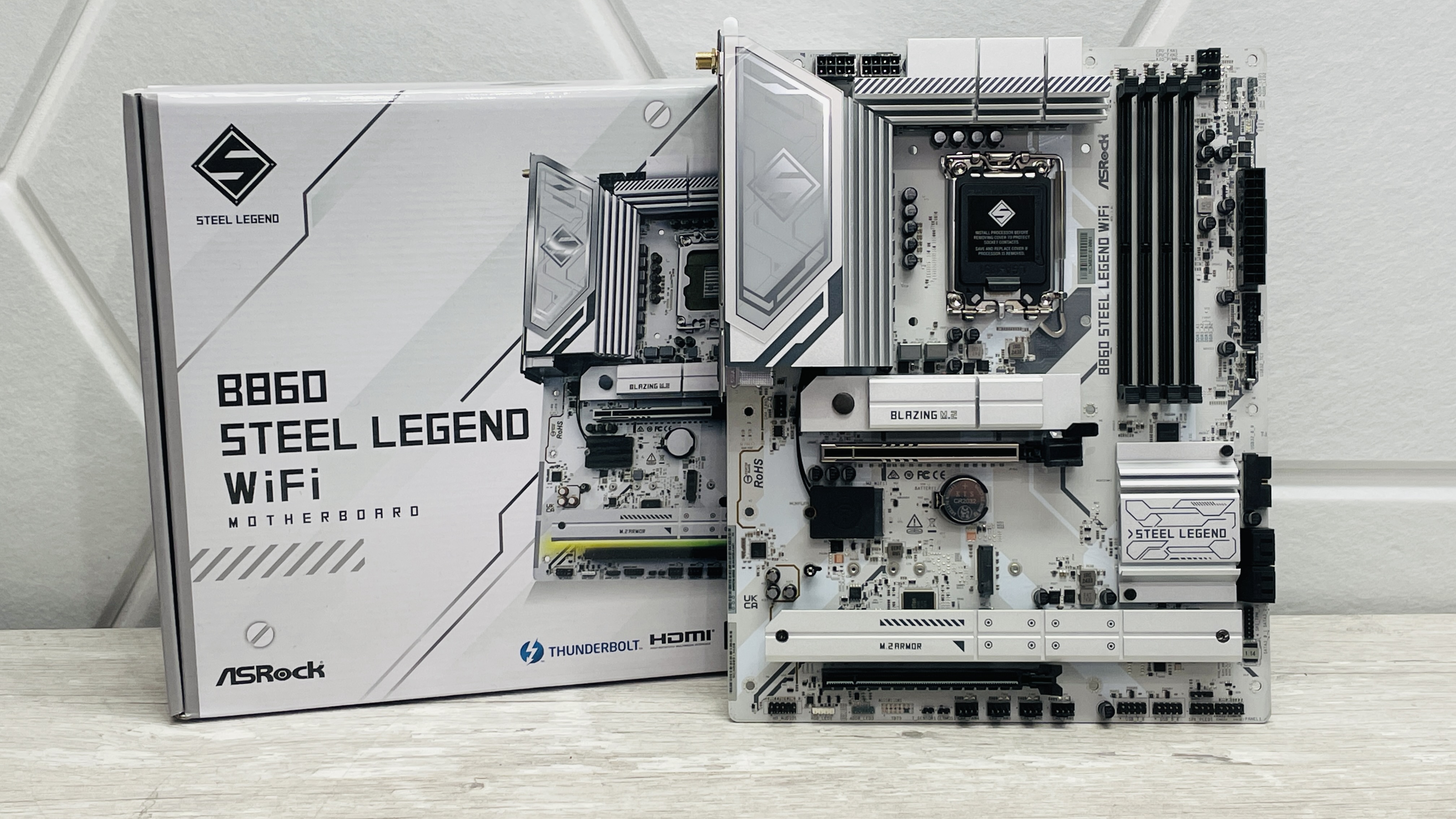
Everything you could want, bar overclocking support.
If you remember the days that you could pick up a relatively high-end motherboard for less than $250, you’re not alone, but even today there are one or two apparent good deals around that offer plenty of premium features and leave you with change from $200. The ASRock B860 Steel Legend Wi-Fi might lack overclocking support as it uses the B860 chipset and not Z890, but it still offers full PCIe 5.0 support and even has Thunderbolt 4.
It used to be the case that adding the latter alone would require you taking out a mortgage, but ASRock has even managed to make the board look attractive too, with a silvery white colour scheme. And RGB lighting splashing around the two lower heatsinks on the PCB. So far, it seems like the perfect motherboard for the price.
In fact, moving around the board and scouring more closely at the specs table, there doesn’t seem to be any significant cutbacks to hit that price either. There are plenty of USB ports, three of the four M.2 ports have heatsinks, there are four SATA ports, which is typical these days and plenty of fan headers too.
If you’re in the market for an Intel Core Ultra CPU and don’t want to spend more than $200 then so far so good as ASRock seems to offer nearly everything you need in terms of modern features with the B860 Steel Legend Wi-Fi likely to turn a few heads too.
Socket: Intel LGA1851
Chipset: Intel B860
CPU compatibility: Intel Core Ultra 200 desktop
Form factor: ATX
Memory support: DDR5-4800 to DDR5-8666 (OC), up to 256 GB
Storage: 4x M.2, 4x SATA
USB (rear): 1x Thunderbolt 4 Type-C 40 Gbps, 2x USB 3.1 Type-A 10 Gbps, 4x USB 3.0 Type-A 5 Gbps, 3 x USB 2.0
Display: 1x HDMI 2.1, 1x DisplayPort, 1x USB/DisplayPort
Networking: Realtek 2.5G LAN, Wi-Fi 6E
Audio: Realtek ALC1220
Price: $199 | £216 | $409
Looking a little more closely as the specs table and ASRock has used Realtek ALC1220 audio rather than skimping and going for ALC897, which is probably what we expected given the price so this was a pleasant surprise. There’s an impressive nine Type-A USB ports on the rear panel too and only three of these are USB 2.0 before you ask with the rest being USB 3.0 and two being USB 3.1.
Both the top M.2 port and primary PCIe slot are PCIe 5.0 compatible and the M.2 slot here even has a double-sides heatsinks to cool both sides of SSDs. This should give it a fighting chance of effectively cooling our toasty PCIe 5.0 SSD. Installing your SSDs is simple too, thanks to the top heatsink featuring a tool-less mechanism as do all the actual M.2 ports, while you’ll need to reach for the screwdriver to deal with the lower M.2 heatsink.
ASRock has also added what it calls PCIe Lite Release to the primary PCIe slot too, which is a release leaver extension that makes it a lot easier to remove your graphics card due to large M.2 heatsink. We’d still prefer one of the push-button designs, probably for pure laziness, but ultimately this is still more intuitive than the Asus method, which involves doing the very unnatural thing of lifting your graphics card from the PCI slot end, which is usually recipe for disaster.
There are eight fan headers, which is on par with high-end boards, a total of four RGB headers, a USB BIOS Flashback button on the rear I/O panel and the Type-C front panel header even supports USB 3.1 Gen 2×2. The only feature that’s a drop down from the current crop of most Intel and AMD boards is Wi-Fi 6E as opposed to the more modern Wi-Fi 7.
PC Gamer test rig
CPU: Intel Core Ultra 9 285K | Cooler: Asus ROG Ryujin III 360 ARGB Extreme | RAM: 32 GB Corsair Vengeance Pro DDR5-6000 | Storage: 2 TB Corsair MP700 | PSU: MSI MAG AB50GL 850 W | OS: Windows 11 24H2 | Chassis: Open platform | Monitor: Dell U2415
Performance-wise things weren’t lacking compared to more expensive motherboards either. Its average frame rate in Cyberpunk 2077 of 116fps was actually one of the best we’ve seen of any LGA1851 motherboard while the 104fps in Baldur’s gate was identical to the ASRock Z890 Steel Legend Wi-Fi. There were no undue issues with the CPU temperature or package power, which were both level with the competition in games, while in the more demanding Cinebench, the peak CPU package draw of 223W was also on par.
The VRM temperature of 45°C was pretty decent too, and actually slightly cooler than quite a few more expensive boards, as was the chipset temperature of 34°C. Perhaps the biggest win was that of the PCIe 5.0 SSD temperature, which at a peak of 69°C meant the board easily tamed it and performed better than the MSI MEG Z890 Ace and Gigabyte Z890 Aorus Elite WiFi7 Ice.
ASRock’s M.2 heatsinks here are either making better contact than lots of other boards or the pads themselves are of better quality. The content creation tests again saw the board sit level with pricier options and showing no signs of throttling the Core Ultra 9 285K, with a sample per minute rate of 175 in Blender and multi-core core of 2,409 in Cinebench both right in the mix.
✅ You want most of the latest features and excellent cooling for just $200: As well as offering many of the latest features such as Thunderbolt 4 and PCI 5.0, it kept our PCIe 5.0 M.2 SSD remarkably cool as well as the VRMs and chipset.
❌ You want to overclock or need Wi-Fi 7: Sadly, there’s no overclocking support due to the B860 chipset and perhaps wisely, ASRock has ditched Wi-Fi 7 to bolster features elsewhere.
These days its rare to have such a good-performing motherboard available for so little, and it’s almost a shame that the ASRock B860 Steel Legend Wi-Fi landed on such a lacklustre platform as Intel’s somewhat ill-fated LGA1851 and its mediocre CPUs. It’s also a shame that overclocking isn’t enabled due to the B860 chipset and in our view with lashings of hindsight, Intel allowing overclocking on B860, even to a smaller degree, would have made the platform much more appealing.
The fact you can get Thunderbolt 4 for $200 and no more is something we never thought we’d see, buy ASRock doesn’t stop there. As we said at the start, the ASRock B860 Steel Legend Wi-Fi looks great and also has plenty of USB ports, onboard RGB lighting and more than enough fan headers too, which are evenly distributed at key points on the PCB.
As usual with ASRock boards, though, the ASRock B860 Steel Legend Wi-Fi’s EFI isn’t great and is in dire need of an update to bring it in line with the revamped versions from the likes of Asus and MSI, especially when it comes to the ancient-looking fan control section. Still, it’s functional and most of us will only need to visit it once or twice. Overall this is a stunning motherboard for the cash and capable of handling any hardware you throw at it.
